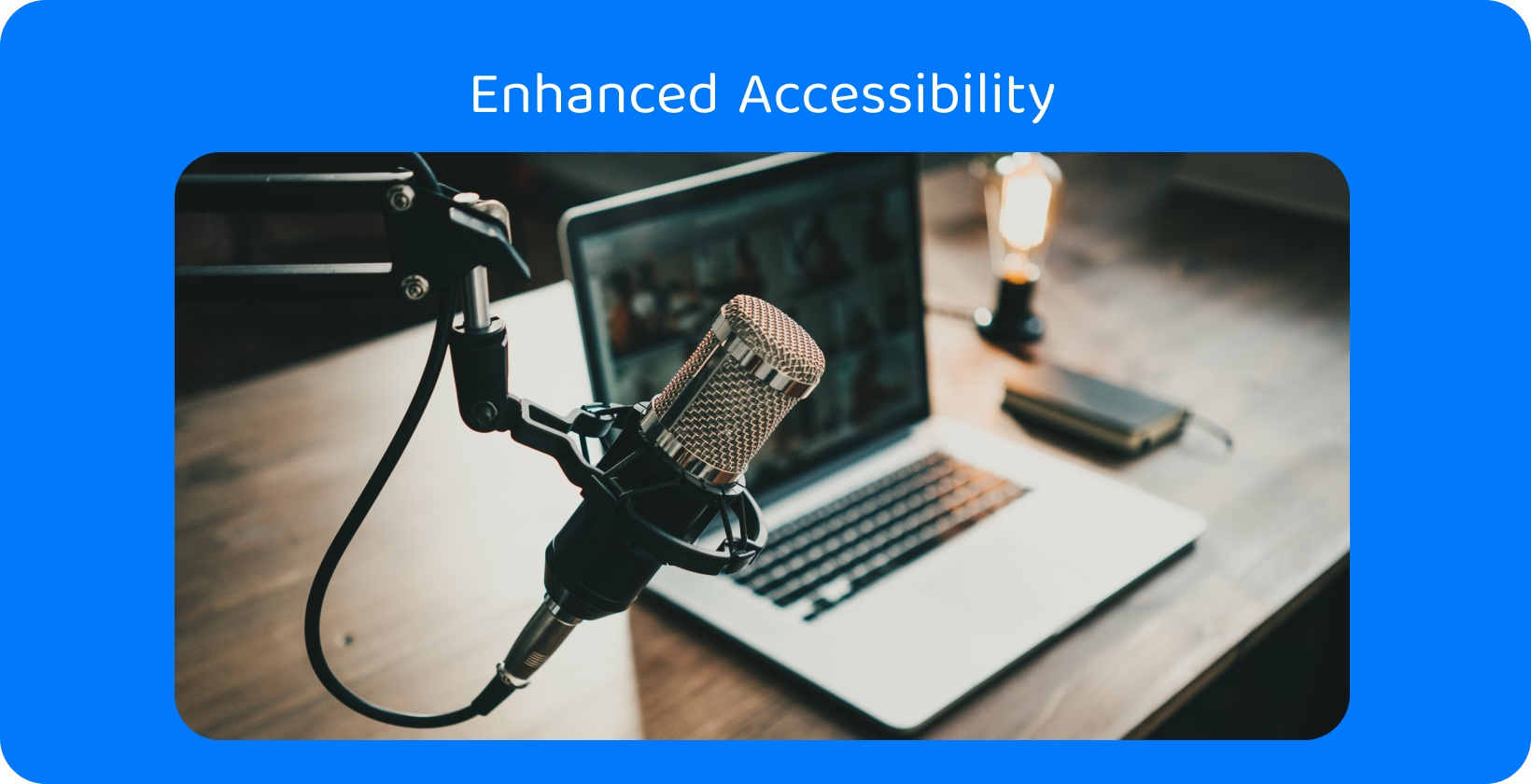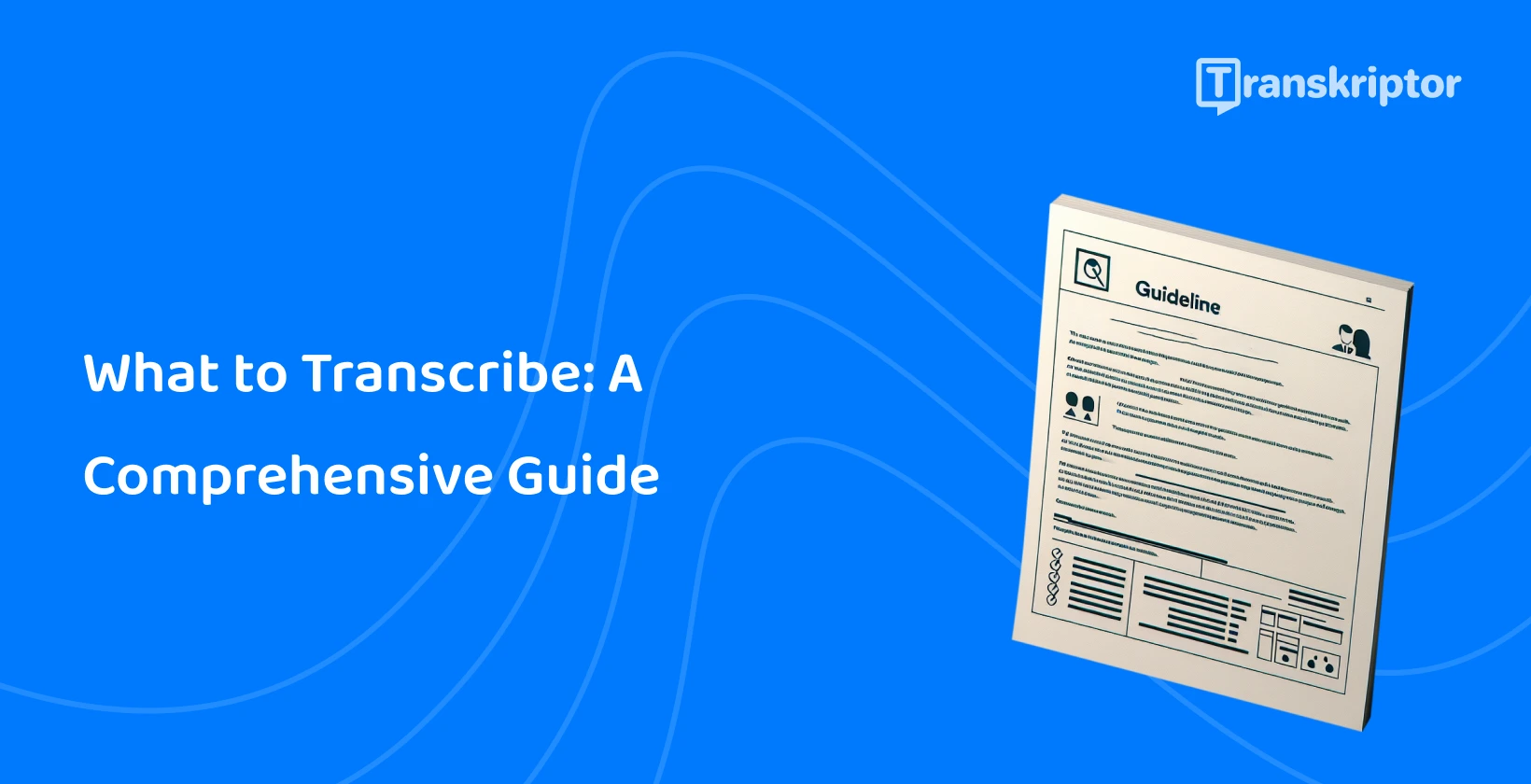Commonly used 9 transcription areas are listed below.
- Interviews: Interviews are a method of conversation typically used for evaluating qualifications, gaining information, or learning about individuals' experiences and opinions.
- Lectures and presentations: Lectures and presentations are formal methods of delivering information to an audience. Students and teachers use them frequently for their educational and professional settings.
- Meetings: Meetings are gatherings of individuals or groups. People typically convened to discuss topics of common interest, make decisions, or exchange information in meetings.
- Conferences & presentations: Conferences are large-scale gatherings that bring together individuals from a specific industry or with a common interest.
- Podcasts: Podcasts are digital audio or video recordings that are available for streaming or download.
- Legal proceedings: Legal proceedings are formal activities conducted within the judicial system to resolve disputes or administer justice.
- Medical records: Medical records are comprehensive documents that contain a patient's health history.
- Phone calls: Phone calls are real-time voice communications between two or more individuals using telephones or smartphone devices.
- Video content: Video content encompasses any form of visual media created for entertainment, education, marketing, and so on.

1. Interviews
Interviews are structured conversations where one side asks questions to another side. Primary aims of interviews are to gather information, assess qualifications, or understand perspectives. Dialogues are both formal or informal and occur in various settings, ranging from job applications to academic research. Interviews can be one-on-one, panel-based, or even conducted remotely, adapting to the purpose and context needed.
Transcribing interviews converts spoken words into written text, offering several advantages. It enables detailed analysis, as researchers can meticulously examine responses. Transcriptions facilitate data sharing among team members, enhancing collaborative evaluation. Written records improve accuracy in reporting findings and support data preservation for future reference. Transkriptor will automatically transcribe the interview within minutes.
2. Lectures & Presentations
Lectures and presentations are formal, structured methods of conveying information to an audience. Lectures involve a speaker delivering a monologue to educate listeners, while presentations are more interactive. People use visuals in presentations and ensure more active participation of the audience.
Transcribing lectures & presentations creates accessible records for attendees to review and solidify their understanding. Transcriptions serve non-native speakers and individuals with hearing difficulties by providing a readable format. They enable keyword searches, making it easier to locate specific information. Transcriptions offer a foundation for creating supplementary materials, like summaries or highlights, and facilitate accurate citations in academic and professional contexts.

3. Meetings
Meetings bring individuals or groups together to discuss shared topics, make decisions, or exchange information. Their formality and size varies, and they can take place in person, virtually, or through hybrid formats. Meetings serve various purposes, from corporate strategy sessions to casual team check-ins.
Transcribing meetings ensures every detail is captured accurately. The process aids in maintaining a clear record of decisions and action items, reducing misunderstandings. Transcribing meetings supports accountability by providing a reference for who said what.
Transcribing enables participants to fully engage without the distraction of note-taking. Transcriptions offer a complete account of the proceedings for those absent . Transcriptions facilitate compliance with record-keeping regulations, and enhance accessibility with hearing impairments.
4. Conferences & Webinars
Conferences and webinars bring people together from specific industries or with similar interests to network and share ideas. Conferences often occur in-person, featuring multiple presentations and workshops, whereas webinars are virtual seminars that engage participants through interactive sessions.
Transcribing conferences and webinars aids attendees in reviewing complex information and ensures those unable to attend don't miss out. It also supports non-native speakers and individuals with hearing difficulties by providing a text format. Transcriptions enable easy sharing of knowledge and foster broader dissemination of ideas. Moreover, they serve as a valuable archival resource, allowing future reference and analysis of the content.

5. Podcasts
Podcasts are series of digital audio or video episodes that creators distribute through various platforms, offering content ranging from interviews to educational material. Listeners are able to stream or download episodes, as well as engage with diverse topics at their convenience. They make podcasts a flexible and popular medium for entertainment and learning.
Transcribing podcasts allows easy reference and retrieval of information by enabling listeners to quickly locate specific segments. Transcriptions improve SEO of the podcasts by making content more discoverable online.
6. Legal Proceedings
Legal proceedings encompass the formal actions and processes within the judicial system that courts, lawyers, and involved parties undertake to enforce laws, adjudicate disputes, and administer justice. These include trials, hearings, and appeals, where participants present evidence, argue legal points, and receive judgments from judges or juries.
Transcribing legal proceedings ensures an accurate and detailed record of testimonies, arguments, and decisions, often requiring specialized transcription services for lawyers to maintain precision and reliability in legal documentation. The precision upholds the integrity of the judicial process by providing a verbatim account for review and future reference.
Transcriptions support lawyers in crafting arguments and facilitate judges' decision-making. They enable public access to court proceedings, promoting transparency and accountability. Written records assist in legal research and education by contributing to the broader understanding of law.


